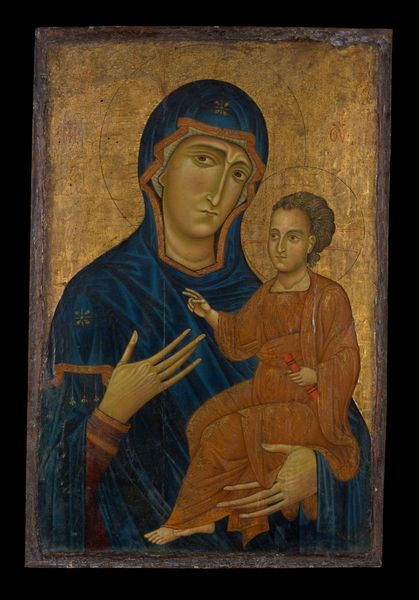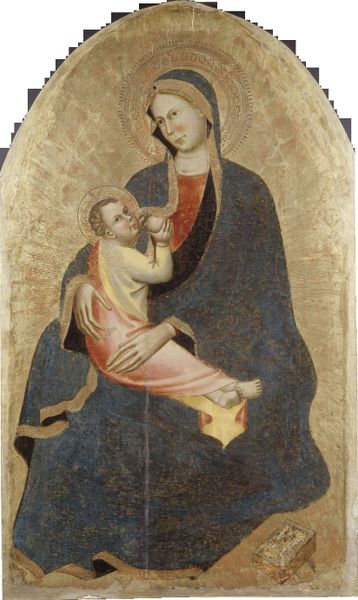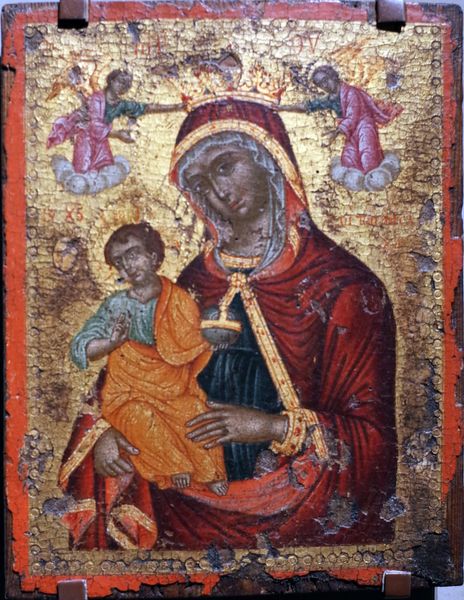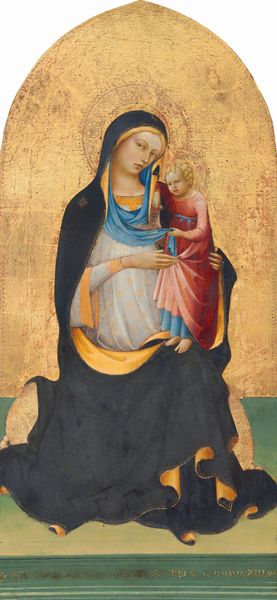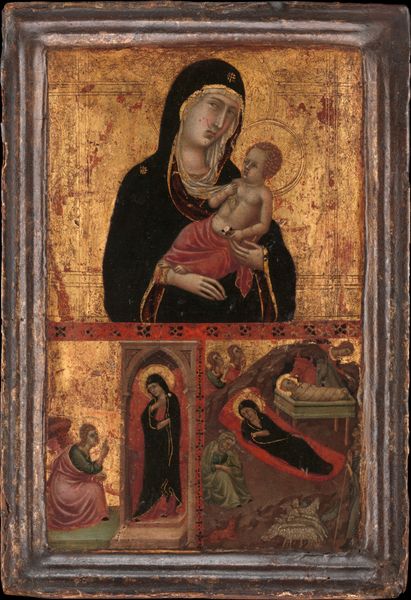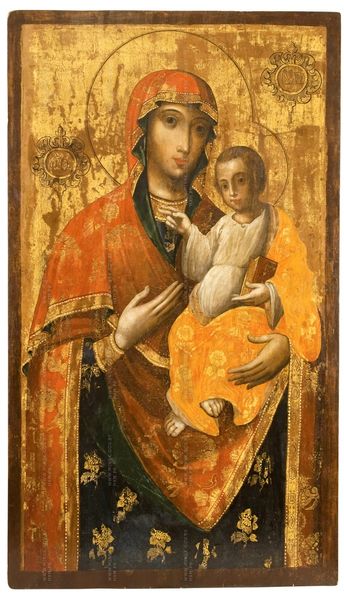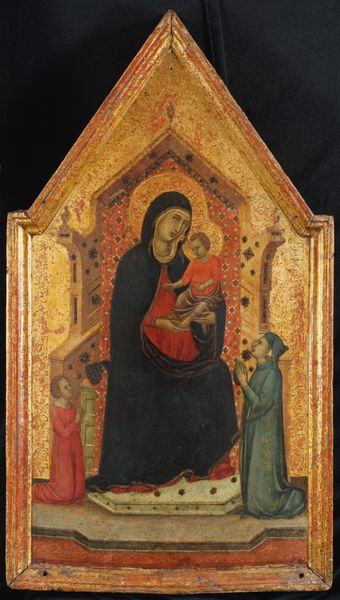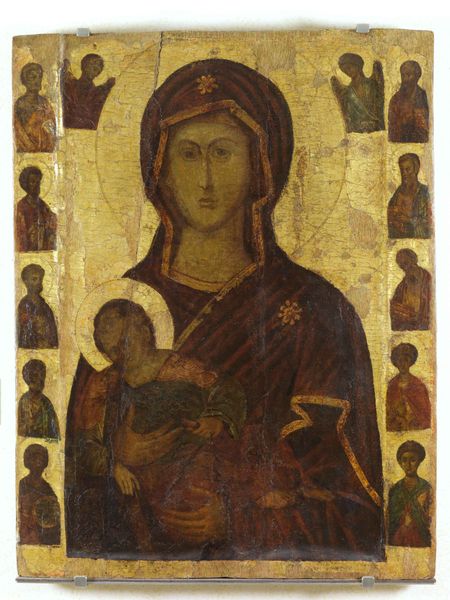
tempera, painting
#
portrait
#
byzantine-art
#
medieval
#
tempera
#
painting
#
oil painting
#
portrait art
Copyright: Orthodox Icons,Fair Use
Editor: We’re looking at *Mother of God Glykophilousa*, a tempera painting from around 1450, rendered in the Byzantine style. What strikes me is the raw emotion captured within the constraints of the traditional icon form. What do you make of it? Curator: Isn’t it compelling? You’re right; it’s a potent mix of formal and deeply felt. To me, that tilted head speaks volumes. It is a gesture of both maternal love and premonition, wouldn't you say? Almost as if she senses what's in store for him. Editor: I do. There's definitely a somber mood despite the golden background. Is that a typical feature for icons of this type? Curator: Absolutely, the gold is spiritual light. In terms of Byzantine art it transcends the earthly. Though I agree the gaze holds an almost unbearable sadness. Consider also the slight awkwardness of the Child's posture – perhaps intentionally portraying the human vulnerability even in divinity. Editor: The vulnerability definitely comes across. I also notice how the edges look aged, it appears damaged. Curator: Indeed, the patina of time adds to its mystique. It speaks of centuries of devotion, countless gazes, and whispered prayers directed at this very image. In my mind it enriches, adding layers of meaning. What do you think? Editor: I’m beginning to appreciate that layering of meaning. Seeing the humanity within the divine makes it feel more real. Curator: Precisely! That tension, between the earthly and the divine, is what gives Byzantine icons their enduring power. I see that tension opening new doors in our appreciation.
Comments
No comments
Be the first to comment and join the conversation on the ultimate creative platform.
